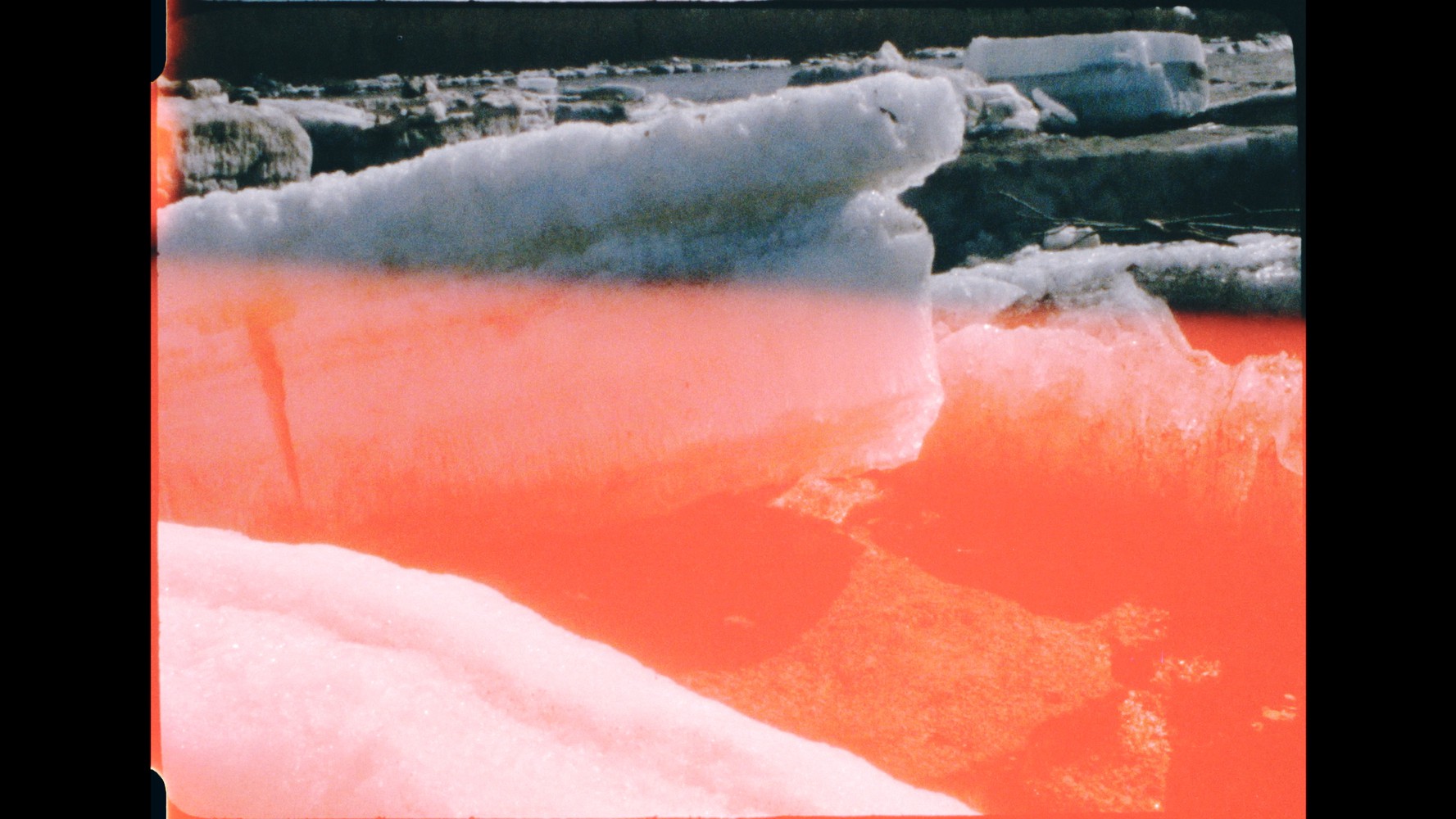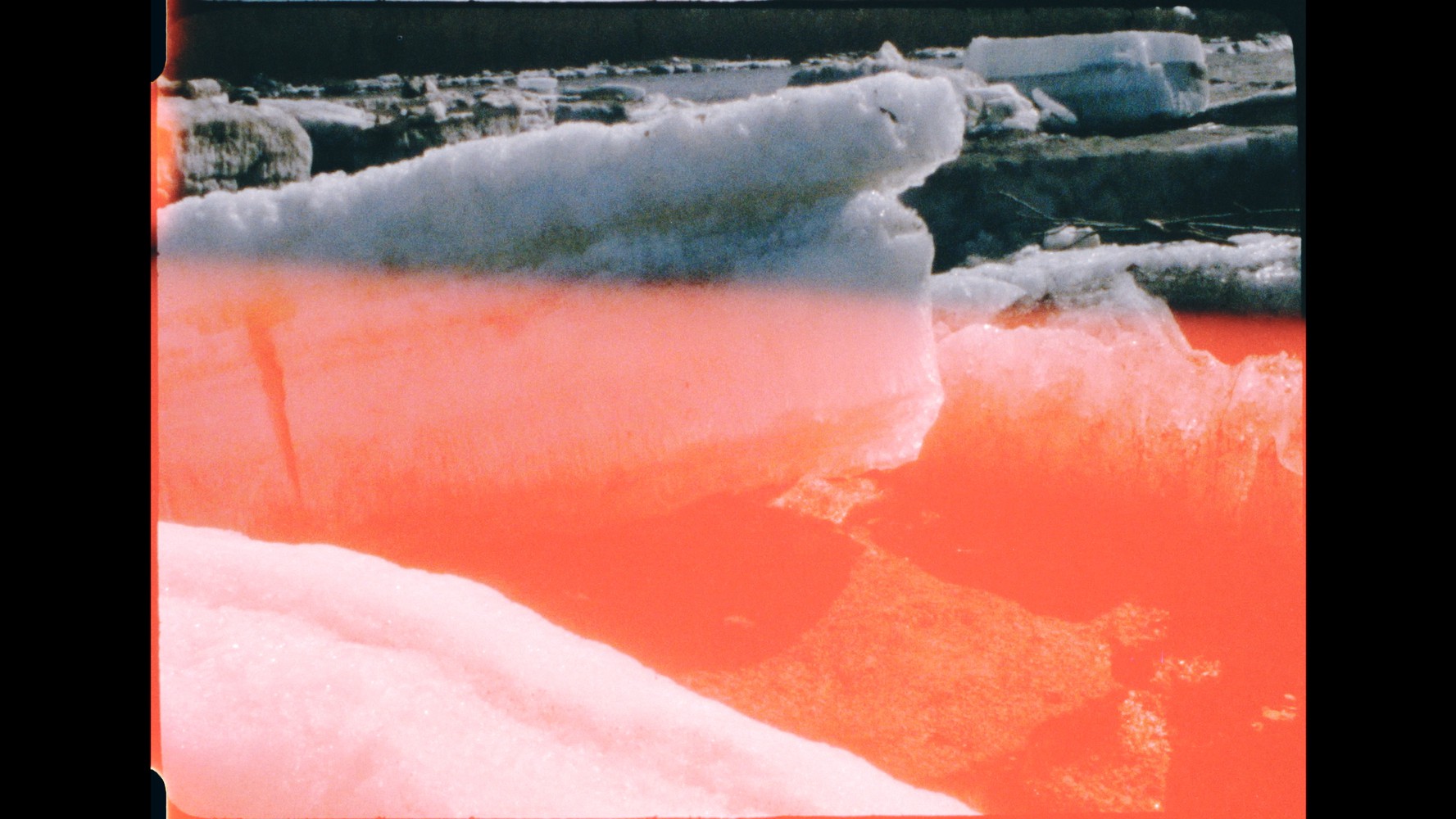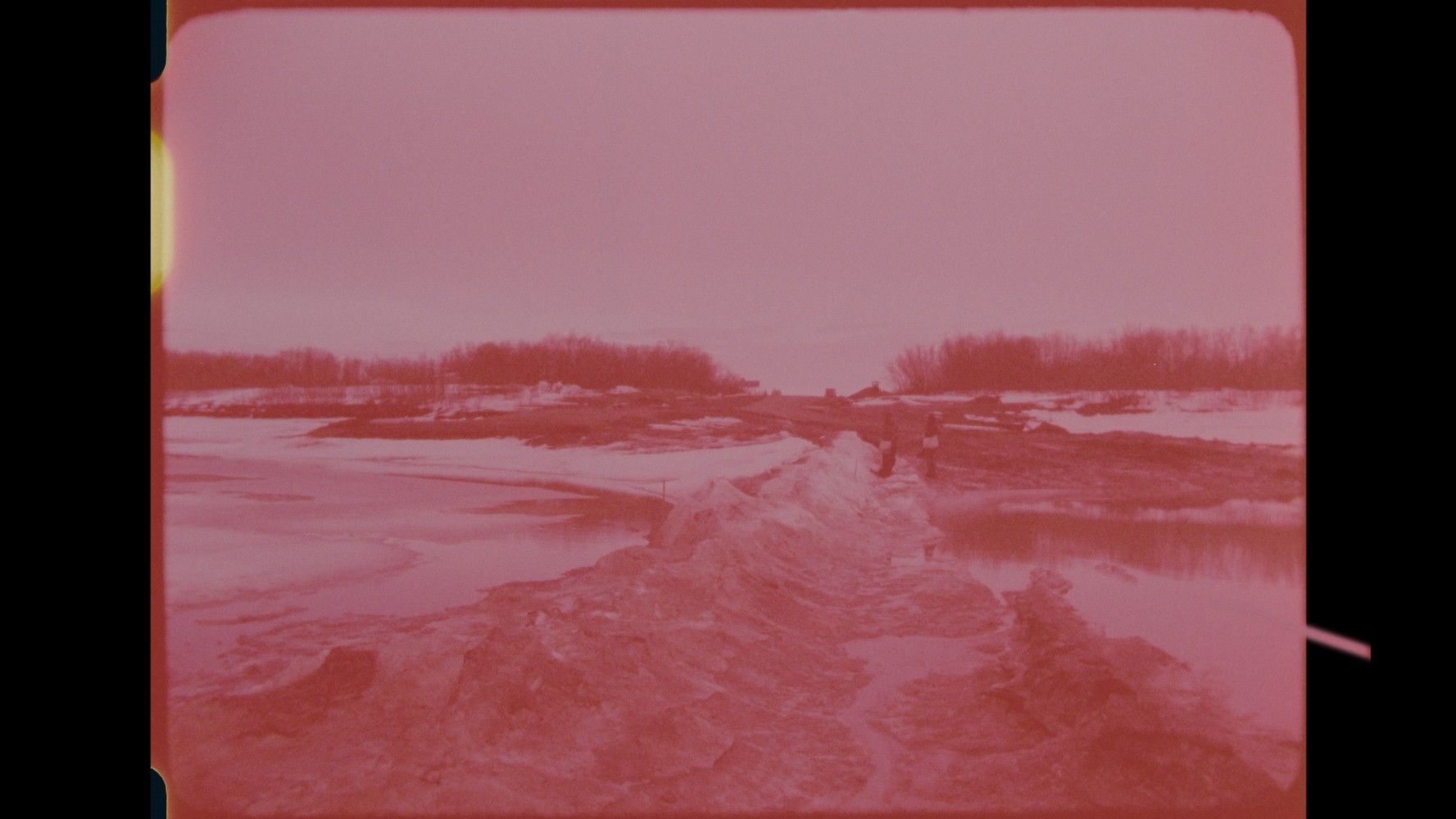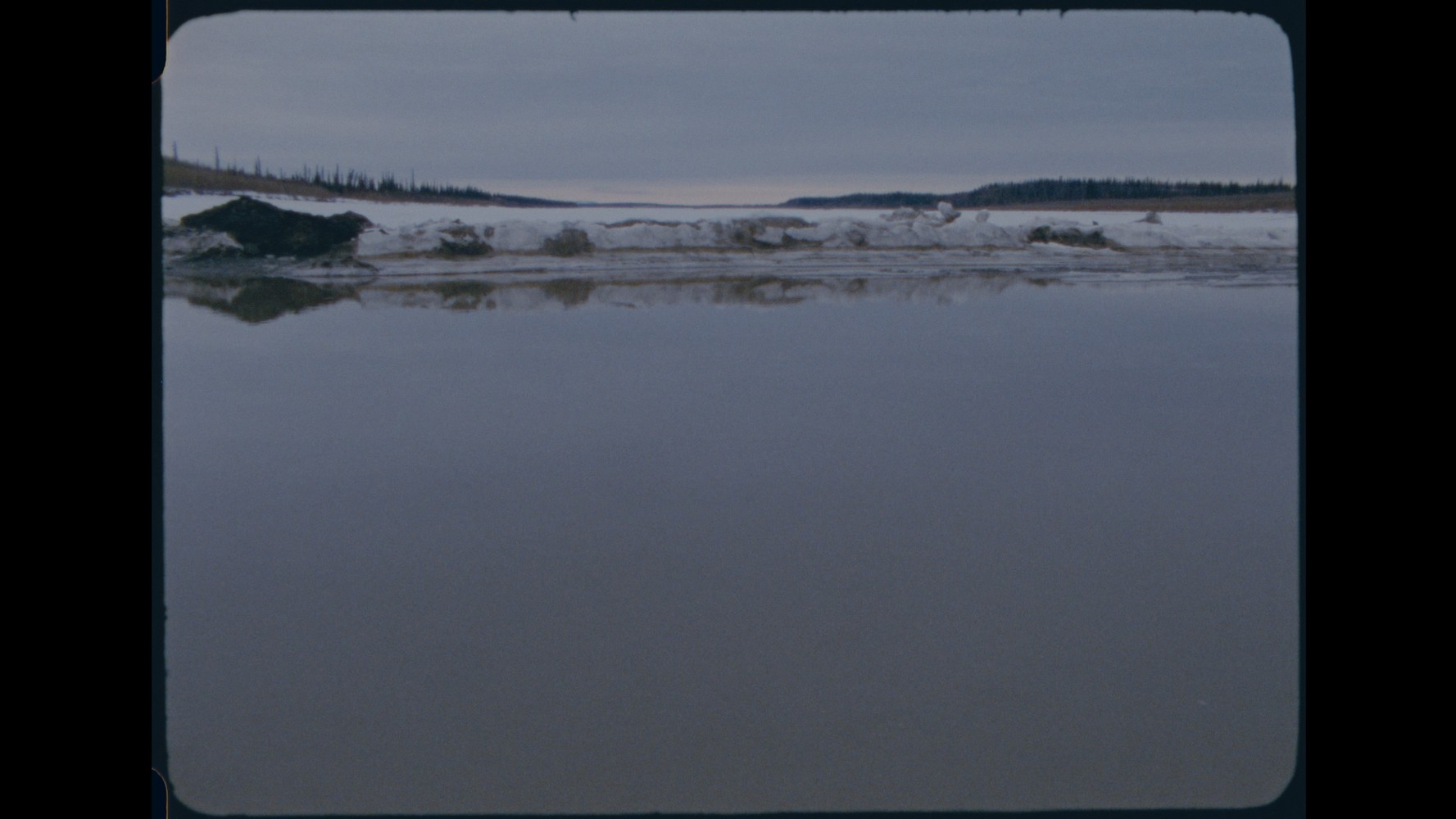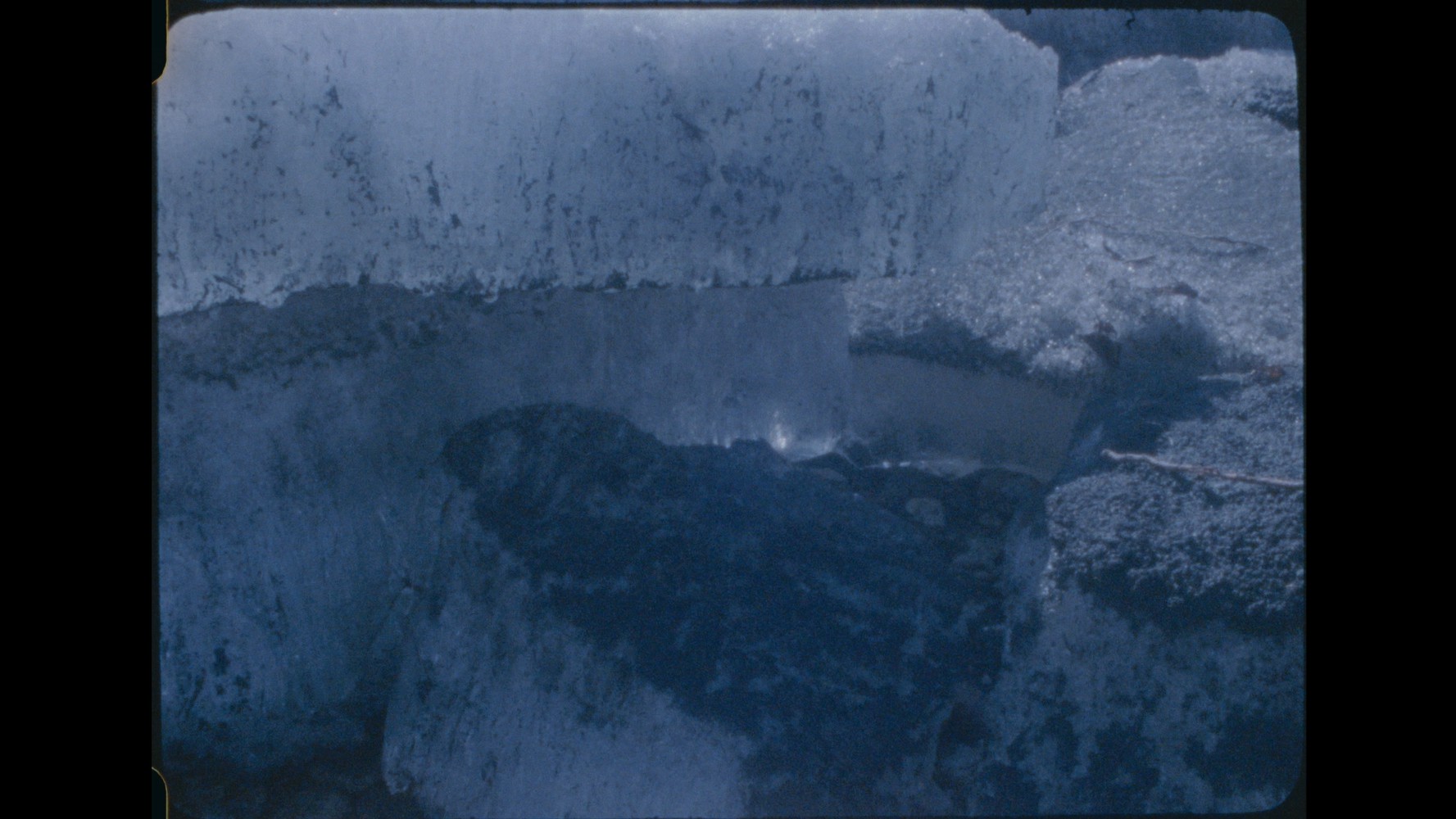L’obsolescence et l’inaccessibilité ont placé les stations radar de la Dew-Line construites durant la guerre froide dans un écart temporel et géographique qui m’a amenée à les modéliser pour m’en rapprocher. Camouflées et oubliées dans un paysage éloigné, elles offrent une invisibilité fondamentale, celle qui permet de voir sans être vu. En reconstituant en images de synthèse une des stations à partir de documents historiques et de données satellites, l’enquête documentaire engendre une simulation d’expérience qui nous rapproche de l’inatteignable. La nouvelle archive ainsi créée est resituée dans un autre contexte spatial, et le double synthétique provoque un nouvel écart, celui du doute sur l’existence même de l’original.
La Dew-Line est une ligne de radars d’alerte précoce qui avait pour but d’anticiper une attaque de missiles soviétiques en provenance du Pôle. Installées par les armées américaine et canadienne à partir de 1955 au nord des côtes arctiques, une soixantaine de bases ont colonisé des zones habitées principalement par des populations inuits et autochtones le long des côtes des îles Aléoutiennes, de l’Alaska, du Canada, du Groenland et de l’Islande.
Pôle vidéo du Fresnoy – Studio national des arts contemporains : Pierre-Yves Boisramé, David Chanterau, François Lescieux, Massimiliano Simbula. Université du Québec à Montréal : Marie Fraser, groupe de recherche « Archiver le présent ». Université Paris 1 Panthéon Sorbonne : Jean-Marie Dallet, collectif SLIDER-Lab. Dawson City : Julie Dimanche, Cyril Contente.
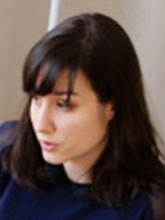
Formée à la photographie à Arles, Marie Sommer a été en résidence au Centre photographique d’Île-de-France et à la Cité internationale des arts à Paris, et pensionnaire de la Casa Velázquez à Madrid. Elle publie avec les éditions Filigranes Teufelsberg en 2010 et Une île en 2020. Son travail a notamment été exposé à la Fondation Gulbenkian Paris, au Deichtorhallen Hambourg, au Kyoto Art Center, et au CNA Luxembourg. Depuis 2018, elle est artiste-chercheuse au sein de Figura, centre de recherche sur l’imaginaire, à l’université du Québec à Montréal, en partenariat avec Le Fresnoy. Sa recherche porte de façon générale sur les lieux-archives de la guerre froide.
Texte : Marie Fraser
Design graphique : Simon Ladoux
Musique : Amo Sphère
Archives : Centre Canadien d'Architecture
Production : Le Fresnoy, Studio national des arts contemporains
Nos vies nous mettent en face de l’autre, de son visage et de son corps. Cette expérience induit un espace auquel, tous les deux, nous apparte-nons. Celui du cosmos, de l’énergie que nous échangeons. Cette énergie est une pure dépense, un « abouchement » avec le monde.
Elle permet de pénétrer un univers qui ne se réduit pas à ce que l’on voit, à ce que l’on touche. Nous le connaissons par les effets de sa substance comme à travers les hypothèses qu’ils permettent.
La matière est là, investie par le virtuel qui la détermine, au point par-fois d’occuper toute la place, nous livrant aux vertiges des jeux et des métamorphoses. S’agit-il d’un pur insaisissable, désincarné, concept décliné en grappes d’idées ou en structures systémiques ? Non, car s’emparant de ces hypothèses, le rêve nous détrompe. Il est un passeur, pour une exploration « suspendue » d’espace en espace. L’emploi des mots peut éloigner l’incarnation mais n’oublions pas Icare et sa double nature entre ascension et gravité. Cette ambivalence nous conduit au sein des territoires de l’art. Ils sont l’équivalent du tableau de Brueghel l’ancien1, de celui de Daniel Pommereulle l’in-terprétant, ou de la poesis, comme le rappelle Yves Bonnefoy dans ses Entretiens 2 cités par un article à leur sujet3. Pour Yves Bonnefoy, la poésie [fait] « apparaître et vivre un lieu et un moment ». Cette apparition n’est pas aisée : « On a beau espérer délivrer les mots de leurs contenus conceptuels qui réduisent le monde à des figures abstraites et incomplètes, on restera toujours en deça de ce que Rimbaud nommait la vraie vie. »
Pour les créateurs, tout l’enjeu est là, car aujourd’hui le réel se présente sous forme de banques d’images, d’archives, de data, de processus de décryptage et d’encodage. Le réel s’élabore par des suites de suppositions et de compositions. Les problématiques d’un programme, d’un dessein, d’une symbolique débattent avec l’autogénération d’une forme « en soi ». Les figures de cette contradiction se lisent dans les ins-tallations, les scénarios, les performances, les films : figures d’une présence impalpable. Celles de ce « feu follet » qu’évoque Vladimir Jankélévitch : « Qu’on ne nous reproche donc pas la nature insai-sissable de ce feu follet puisque nous en faisons profession ! Nous professons ce dénuement. Notre science dénuée nous prive de tout point fixe, de tout système de référence, de contenus facilement déchiffrables ou délégables qui nous permettraient d’épiloguer, d’ali-menter le discours et d’ouvrir un long avenir de réflexion. Notre science nesciente est plutôt une visée, un horizon, elle a donc fait son deuil de la consistance substantielle en général. »
L’emploi d’une visée, la recherche d’un horizon, nous les vivons avec Panorama 23. En son centre, un pas de deux entre « le lieu et le moment » et un principe de déplacement, généré par un mouvement ayant fait le deuil d’une consistance substantielle. Ce pas de deux fertile dénote cet insaisissable par les volutes d’une « peau ».
De quoi est faite cette « peau » ? Disons, donc cette « étoffe » qui n’est pas le résultat d’un tissage d’idées. Est-ce un tapis volant ?
Il est fait d’espaces assemblés, de cartes, qui sont autant d’écrans qu’un instant je retiens.
Nous y suivons des embarcations semblables au Pequod d’Herman Melville, à des engins dans l’air, des véhicules de pensée ou des nuages qui filent.
Que nous offrent-ils ? Des frontières dépassées, des points aveugles et des renversements, en un mot, les dimensions mentales de l’uni-vers. Le futur infiltre le passé par effraction.
Notre environnement est un planétarium et nos phrases, nos images se multiplient dans d’étonnants kaléidoscopes.
Les œuvres du Fresnoy sont les formidables accélérateurs de nos circumnavigations au sein de la nature du monde. Elles appellent la liberté de ressentir et de penser.
Cette phrase d’Emanuele Coccia, pour son film, est une porte d’entrée idéale sur ces travaux : « Pour s’orienter dans ce ciel couché au sein de tout objet, il faut construire des cartes astrales à la manière des anciens. Apprendre à lire la matière comme on lit le ciel » ou, plus loin, « le ciel est la chair de tout ce qui existe. »
Ainsi une œuvre, grâce à l’intelligence artificielle, explore dans des textes sacrés l’intensité et la violence qui s’attachent au mot Dieu. D’autres pointent du doigt le « peu de réalité » de nos lexiques et syntaxes, de leurs interrelations sans objet, prolongements contemporains de la mécanique du Procès, des machineries de Kafka.
Une autre encore nous entraîne vers le nord, où le jour et la nuit se confondent sans fin, à partir d’une cartographie, d’un terri-toire reconstitué, interdit d’ap-proche sensible mais rétabli par les archives. Pure construction mentale, elle nous livre à la magie des ruines. Celle de bâtiments militaires, imaginés pour des stratégies de contre-espionnage, de défense, du « monde libre ». Sic transit gloria mundi. Ils ne sont plus que rêves d’une toute puissance oubliée, déplacés sur d’autres théâtres d’opérations.
Au détour des parcours, un « cube » minimal nous offre de jouer avec la vie de bactéries, en milieu clos, sublimée par une surface projetée. Invisible et fascinant écosystème à l’intérieur des corps.
Sur une autre scène, grâce à une technologie post-digitale, les objets s’évaporent et changent de substance. Employant toutes les res-sources contemporaines de l’image et du son, nos mots se cristal-lisent, le langage devenant transparent à lui-même. Nous le traversons et, dans l’espace soutenu par des lignes de chœurs, il est rythme volatile, fluidifiant la matrice linguistique.
Le réel, ici, est bien ce « tissu » tantôt diaphane, tantôt fantôme, promesse d’un ciel retourné, enterré, trésor au sein d’un champ où peuvent disparaître nos cinq sens, comme dans ce film où les vaisseaux spatiaux s’abîment en un fond océanique, ultra-abyssal, inaccessible. L’auteure de ce film4 propose cette phrase qui qualifie la poétique de ces travaux présents dans Panorama 23 : « Il s’agit d’observer le monde tel qu’il ne nous apparaît pas et d’inventer la possibilité de le redécouvrir. » Ou de le découvrir… encore…
Grâce à l’art, plus vivant que la nature elle-même, cette « peau insaisis-sable », ce voile sont une provocation au rêve qui les déchire, les outre-passe. Il ne s’agit pas de traverser les miroirs mais d’aller vers « l’autre » ; mais, cette fois, un autre sans visage et ne cessant d’apparaître, un « autre » entre l’obscur de la grotte et les lumières du ciel. L’autre vérité, n’est-ce pas le véritable nom de l’art ? L’art ne dit pas ce qui va arriver, il est un espace, sans début, sans fin, sans haut ni bas pour Orphée, mais, cette fois, pour un Orphée qui aurait le droit de se retourner.
Olivier Kaeppelin
